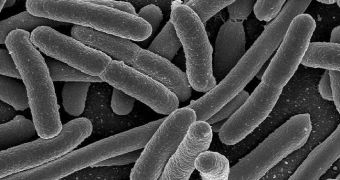A new investigation from experts at the FOM Institute for Atomic and Molecular Physics (AMOLF) and the Massachusetts Institute of Technology (MIT), in Cambridge, evidence that even basic microbes are capable of sophisticated sensory adaptation.
This was though to be impossible in lower species until now. Researchers were very surprised when they learned that Escherichia coli (E. coli) could tune its senses to stimuli not in a primitive way, but in a very advanced manner.
The concept of sensory adaptation refers to the fact that biological sensory systems can acclimatize to continuous stimuli. In the case of humans, vision, hearing, smell, taste and touch can all get accustomed to a stimulus being applied to them, and stop making comparisons.
Generally speaking, these systems work by comparing an impulse with a baseline initial condition. The higher the difference, the stronger the response they cause in the brain. This type of adaptation can be noticed when putting your hand on a table. After a few seconds, the sensation of contact disappears.
Scientists discovered this autonomous neural response more than a century ago, but no one thought that it could extend to microbes as well. This is precisely what the researchers showed in the August 1 issue of the esteemed journal Proceedings of the National Academy of Sciences (PNAS).
During the experiments, scientists subjected E. coli bacteria to an environment whose background conditions were constantly changing. The team focused on analyzing how the bacteria's chemotaxis (swimming behavior) changes with its perception of food sources.
“This bacterial system offers a unique opportunity in the study of biological sensory processes. Its simplicity allows us to connect the molecular mechanisms, responsible for signal reception and processing, directly to how the organism behaves,” AMOLF group leader Tom Shimizu says.
He conducted the work with MIT Department of Civil and Environmental Engineering professor Roman Stocker.
“Because the chemotaxis signaling pathway is highly conserved among prokaryotes, it is likely that a wide range of bacterial species may exhibit this type of response rescaling property,” MIT PhD researcher Tanvir Ahmed explains.
“Bacteria encounter a large spectrum of nutrient concentrations. In the ocean, for example, micromolar and millimolar pulses of nutrients arising from cell deaths or excretions dot an otherwise nanomolar nutrient landscape,” Stocker adds.
“A sophisticated rescaling of chemotaxis, such as we found for E. coli, would provide a strong fitness advantage when foraging in these environments,” he concludes.

 14 DAY TRIAL //
14 DAY TRIAL //